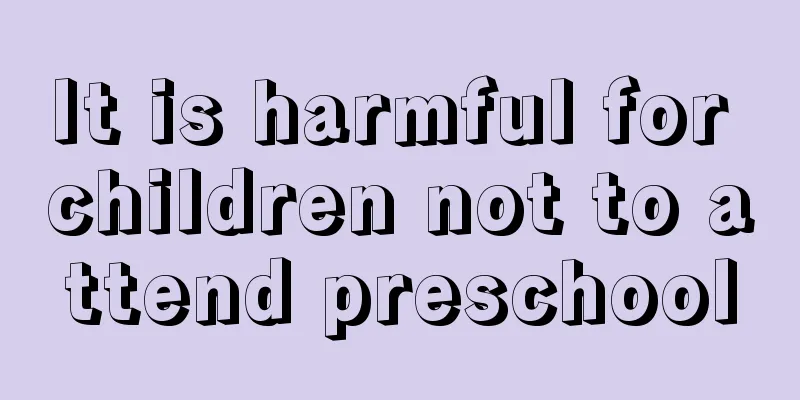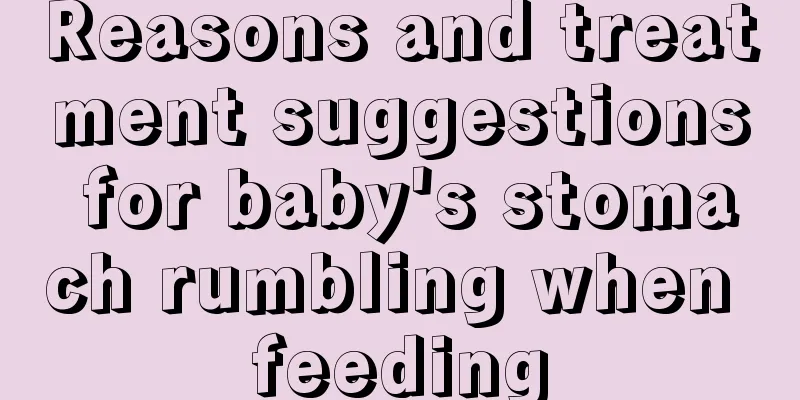How to take medicine for jaundice in children

|
Simply put, jaundice is a symptom of yellow skin, yellow eyes, and yellow urine. This symptom usually occurs in newborn babies. It is a symptom of yellow bilirubin accumulating in the baby's epidermis, causing the skin to turn yellow. Jaundice not only affects the appearance, but also may spread to the brain due to the diffusibility of bilirubin, affecting the baby's brain. Jaundice can also cause some complications, such as anemia, edema, heart failure and other symptoms. Jaundice should be treated promptly. Pediatric jaundice generally requires professional treatment. Let’s learn in detail how to take medicine for jaundice in children. Causes 1. Physiological jaundice It is related to the characteristics of bilirubin metabolism in newborns, including relatively more bilirubin production; insufficient ability of hepatocytes to absorb bilirubin; poor ability of plasma albumin to bind bilirubin; defective bilirubin excretion capacity; and increased enterohepatic circulation. Therefore, 60% of full-term infants and 80% of premature infants may develop visible jaundice in the first week after birth. 2. Pathological jaundice 1. Excessive production of bilirubin Due to excessive destruction of red blood cells and increased enterohepatic circulation, serum unconjugated bilirubin increases. Common causes include: polycythemia, extravascular hemolysis, alloimmune hemolysis, infection, increased enterohepatic circulation, erythrocyte enzyme deficiency, abnormal erythrocyte morphology, hemoglobinopathy, vitamin E deficiency and hypozincemia. 2. Hepatic bilirubin metabolism disorder Due to the low function of liver cells to absorb and bind bilirubin, the serum unconjugated bilirubin increases. Common causes include: hypoxia and infection, Crigler-Najjar syndrome (congenital uridine diphosphate glucuronyltransferase deficiency), Gilbert syndrome (congenital non-hemolytic unconjugated bilirubinemia), Lucey-Driscoll syndrome (familial transient neonatal jaundice), drugs (such as sulfonamides, salicylates, indomethacin, lanolin, etc.), congenital hypothyroidism, hypopituitarism, trisomy 21 syndrome, etc. 3. Bile excretion disorder Impairment in the excretion of conjugated bilirubin by hepatocytes or obstruction of the bile duct can lead to hyperconjugated bilirubinemia, but if accompanied by impaired hepatocyte function, unconjugated bilirubin may also increase. Common causes include: neonatal hepatitis, congenital metabolic defects, bile duct obstruction, Dubin-Johnson syndrome (congenital non-hemolytic conjugated bilirubinemia), etc. symptom: 1. Physiological jaundice In mild cases, the disease is light yellow and limited to the face and neck, or spread to the trunk. The sclera may also turn yellow and then disappear after 2 to 3 days, and the skin color returns to normal on the 5th to 6th day. In severe cases, jaundice may spread to the head and then the feet, and the vomitus and cerebrospinal fluid may also turn yellow for more than a week. In particular, some premature infants may persist for up to 4 weeks. Their stool is still yellow and there is no bilirubin in the urine. (1) Color of jaundice: In mild cases, the color is light pink; in severe cases, the color is darker, but the skin is rosy yellow with a hint of red. (2) Location of jaundice: Mostly on the trunk, sclera and proximal extremities, usually beyond the elbows and knees. (3) Newborns are generally in good condition, without anemia, no hepatosplenomegaly, normal liver function, and no kernicterus. (4) Physiological jaundice is more common in premature infants than in full-term infants and may appear slightly later, 1 to 2 days later. The more severe the jaundice, the slower it disappears, which may last up to 2 to 4 weeks. 2. Pathological jaundice It often has the following characteristics: ① Early onset, within 24 hours after birth; ② Severe degree, greater than 12.9 mg/dl in full-term infants and greater than 15 mg/dl in premature infants; ③ Rapid progression, with serum bilirubin rising by more than 5 mg/dl per day; ④ Long duration, or recurrence. (1) Extent of jaundice: In addition to the face and trunk, the limbs, hands, and soles of the feet may also turn yellow. (2) Jaundice color: Unconjugated bilirubin is elevated, with an orange or golden color. Conjugated bilirubin is elevated, with a dark green or yellow color. (3) Associated manifestations: Hemolytic jaundice is often accompanied by anemia, hepatosplenomegaly, petechiae, edema, and heart failure. Infectious jaundice is often accompanied by fever, symptoms and signs of infection and poisoning. Obstructive jaundice is often accompanied by liver enlargement, white stools and yellow urine. (4) Systemic symptoms: These may occur in severe jaundice, manifested by poor response, mental depression, and anorexia. Low muscle tone, followed by irritability, screaming, difficulty breathing, convulsions or opisthotonos, increased muscle tone, etc. treat 1. Light therapy It is a simple and effective method to reduce serum unconjugated bilirubin. Unconjugated bilirubin can produce conformational isomers, structural isomers and photooxidation products after exposure to light. Among them, the formation of structural isomers is the most important. It can be quickly excreted from bile and urine without being metabolized by the liver. It is the main reason why phototherapy reduces total serum bilirubin. The most commonly used method in China is blue light irradiation. Place the newborn baby in a phototherapy box, protect both eyes with black eye masks to avoid damaging the retina, cover the perineum and anus with a diaper, and leave the rest of the body exposed. Use single-sided or double-sided light irradiation for 2 to 48 hours (generally not more than 4 days). Continuous or intermittent irradiation can be used until the bilirubin drops below 7 mg/dL and the treatment can be stopped. 2. Exchange blood therapy Exchange transfusion can effectively reduce bilirubin, replace sensitized red blood cells and alleviate anemia. However, blood transfusion requires certain conditions and may also produce some adverse reactions, so the indications should be strictly followed and it is generally used when phototherapy fails. 3. Medication Use drugs to reduce bilirubin production, accelerate bilirubin clearance, or inhibit bilirubin enterohepatic circulation, including supplying albumin, correcting metabolic acidosis, liver enzyme inducers (such as phenobarbital), and intravenous immunoglobulin. 4. Supportive treatment The main thing is to actively prevent and treat hypoxia, hypercapnia, cold injury, hunger, infection, and hyperosmotic drug infusion, prevent temporary opening of the blood-brain barrier, and prevent the occurrence of bilirubin encephalopathy. |
<<: How to remove baby’s tongue coating?
>>: What is the massage therapy for runny nose in children?
Recommend
What causes projectile vomiting in babies?
Parents are more worried about infants' proje...
Reasons for slow response in newborns
There is a folk legend that babies born naturally...
What to do for a child's knee pain
Knee pain in children is not a normal phenomenon,...
What should I do if my child has a fever and neck pain?
Children are very susceptible to viral infection ...
Nursing measures for children with fever
Fever results from an imbalance in body temperatu...
How to do health exercises for children
Many parents see their children are a little youn...
How to deal with yellow and cloudy eyes in children
For every mother, the health of her baby is the m...
What are the symptoms of hand and foot eczema in children?
Because children's skin resistance is relativ...
What to do if your child bites his lower lip
Perhaps many people have heard about the baby-rel...
What is the correct way to correct baby's nail biting?
In life, some babies like to bite their nails no ...
Is it okay for babies to drink milk powder while lying down while sleeping?
Milk powder is very important for babies, because...
Sinusitis medication for children
Children's bodies are very weak and because o...
What are the causes of catarrhal otitis media?
Generally speaking, catarrhal otitis media is sec...
How should children's appetite be adjusted?
Children are in the stage of growth and developme...
Air conditioning temperature for newborns in summer
If a child is born in summer, the weather is rela...









